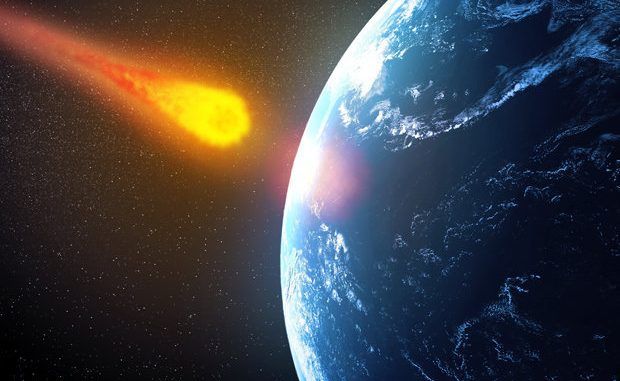
A huge fireball crashed into the Atlantic earlier in February and went virtually unseen.
NASA reported that the meteor exploded in the air 620 miles (1,000 kilometers ) off the coast of Brazil on February 6th, releasing energy equivalent to 13,000 tons of TNT, the same as the first atomic weapon that levelled Hiroshima in 1945
It is the largest incident of its type since February 2013 when a fireball exploded over Chelyabinsk, Russia, leaving more than 1,600 people injured.

BYPASS THE CENSORS
Sign up to get unfiltered news delivered straight to your inbox.
You can unsubscribe any time. By subscribing you agree to our Terms of Use
RT reports: An extraterrestrial body allegedly the size of a large living room, about 5 to 7 meters across, released energy equivalent to 13,000 tons of TNT, which is 40 times less than the Chelyabinsk phenomenon. The object entered the atmosphere before exploding at approximately 30km above the Atlantic. It couldn`t be observed from the ground as it fell too far away from any populated area unlike the Chelyabinsk meteor, which hit the city with over 1 million dwellers, damaging nearly 3,000 building and causing multiple injuries.
“Had it happened over a populated area, it would’ve rattled some windows and probably terrified a lot of people, but I don’t think it would’ve done any real damage,” American astronomer Phil Plait wrote in the Slate’s Bad Astronomy blog.
The data on the explosion, which became publicly available only two weeks after the incident occurred, is still too scarce to draw any extensive conclusions about its scale and the method NASA had employed to detect the meteor. Plait suggests the scientists might use either seismic monitors to spot the sound wave from the explosion or atmospheric microphones which caught an infrasound from the blast.
On average, 100 tons of meteor debris fall onto the Earth every day, Plait notes, however, they cause little to no damage. Many of the pieces are too small to cause any impact. The majority of the bigger objects disintegrate at speeds of 10 to 100 km per second, at which rocky debris burn up before reaching the ground.
“The increase in surface area means more heating and glowing, then those pieces break up and get smaller, and you get a runaway cascade,” explains the researcher. If the process of disintegration goes too quickly, then people can observe an “explosion,” which is in fact a result of conversion of the kinetic energy into light and heat.
Events of the scale similar to the February 6 explosion occur several times per year, but people are mostly unaware of them as the debris lands in the ocean.
Casualties from meteors are extremely rare, though an Indian man was reportedly killed by a meteorite as it struck the campus of a private engineering college in south Indian earlier this month.


